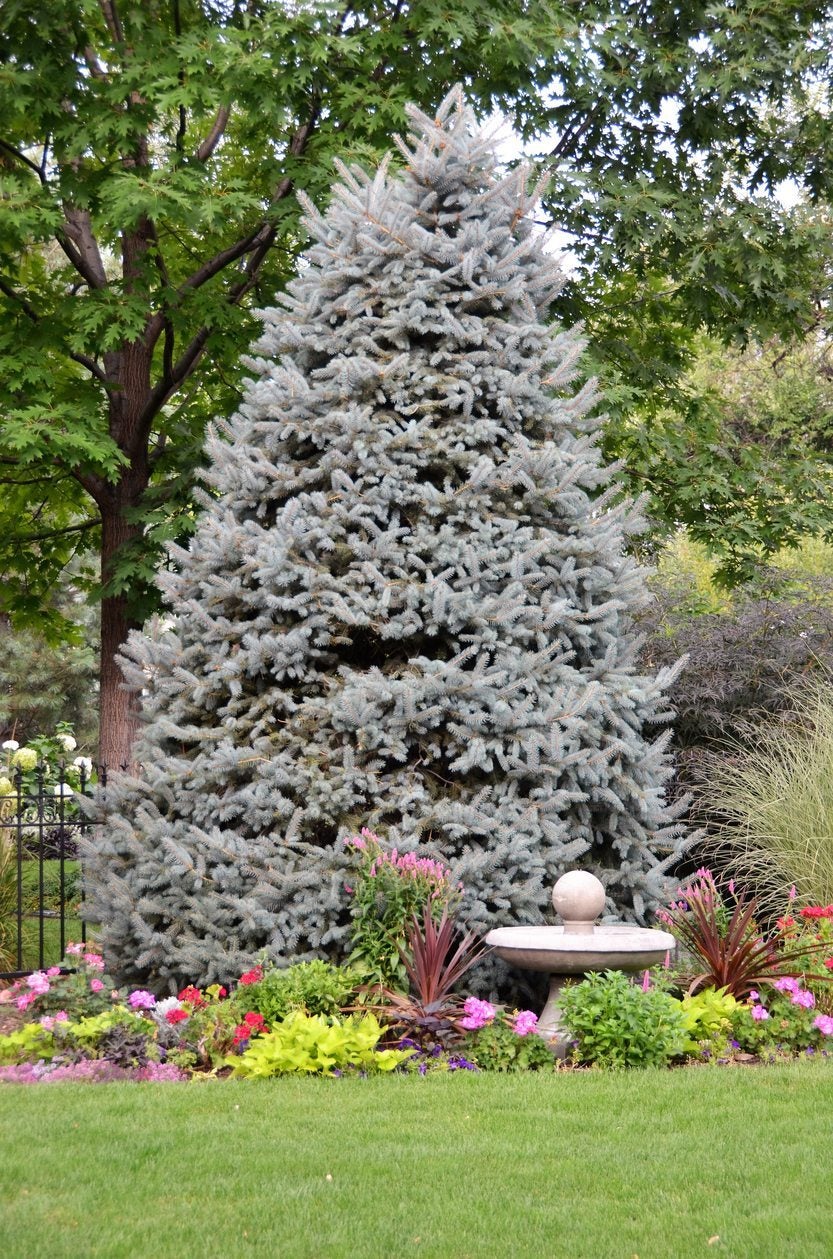Blue Spruce Is Turning Green – Tips On Keeping A Blue Spruce Tree Blue


You are the proud owner of a beautiful Colorado blue spruce (Picea pungens glauca). Suddenly you notice that the blue spruce is turning green. Naturally you are perplexed. To understand why blue spruce turns green, read on. We’ll also give you tips for keeping a blue spruce tree blue.
About Green Needles on a Blue Spruce
Don’t be surprised if you see green needles on a blue spruce tree. They may be perfectly natural. The blue color of blue spruce needles is caused by epicuticular waxes on the needles that reflect specific wavelengths of light. The more wax on a needle, the bluer it is. Neither the amount of wax nor the blue color is uniform across the species. Some trees can grow decisively blue needles, but others of the same type have green or blue-green needles. In fact, another common name for the tree is silver spruce. When it comes to blue-green needles, some people identify the color as blue and some call it green. What you call greening in blue spruce may actually be the tree’s natural blue-green hue.
Why Blue Spruce Turns Green
Let’s assume that your blue spruce truly had blue needles when you bought it, but then those needles turned green. Greening in blue spruce like this can result from several different causes. The tree produces the wax on its needles (that creates the blue color) in spring and early summer. The wax can wear off over a rough winter or erode by wind, hot sun, pouring rain, and other types of exposure. Air pollutants can cause the wax to deteriorate quickly. This is especially true of nitrogen oxides, sulphur dioxide, particulate carbon and other hydrocarbons. Poor nutrition can also be one of the reasons wax diminishes and blue spruce turn green. Application of pesticides can cause greening in blue spruce needles. This includes not just toxic pesticides but horticultural oils or insecticidal soaps. Greening in blue spruce can also occur naturally over time as the tree ages.
What to Do When Blue Spruce is Turning Green
When your blue spruce is turning green, you can try to stop the process. Keeping a blue spruce blue is not a matter of flipping a magic switch. Instead, giving the tree the best care possible will give you the edge on keeping a blue spruce blue. First, be sure to give your tree a full sun location with good drainage in an appropriate hardiness zone. Next, give it sufficient water to keep the soil moist, plus an extra inch (2.5 cm.) per week during spring and summer. Finally, feed the tree 12-12-1 fertilizer in spring, and repeat this in mid to late summer.
Sign up for the Gardening Know How newsletter today and receive a free copy of our e-book "How to Grow Delicious Tomatoes".

Teo Spengler is a master gardener and a docent at the San Francisco Botanical Garden, where she hosts public tours. She has studied horticulture and written about nature, trees, plants, and gardening for more than two decades, following a career as an attorney and legal writer. Her extended family includes some 30 houseplants and hundreds of outdoor plants, including 250 trees, which are her main passion. Spengler currently splits her life between San Francisco and the French Basque Country, though she was raised in Alaska, giving her experience of gardening in a range of climates.